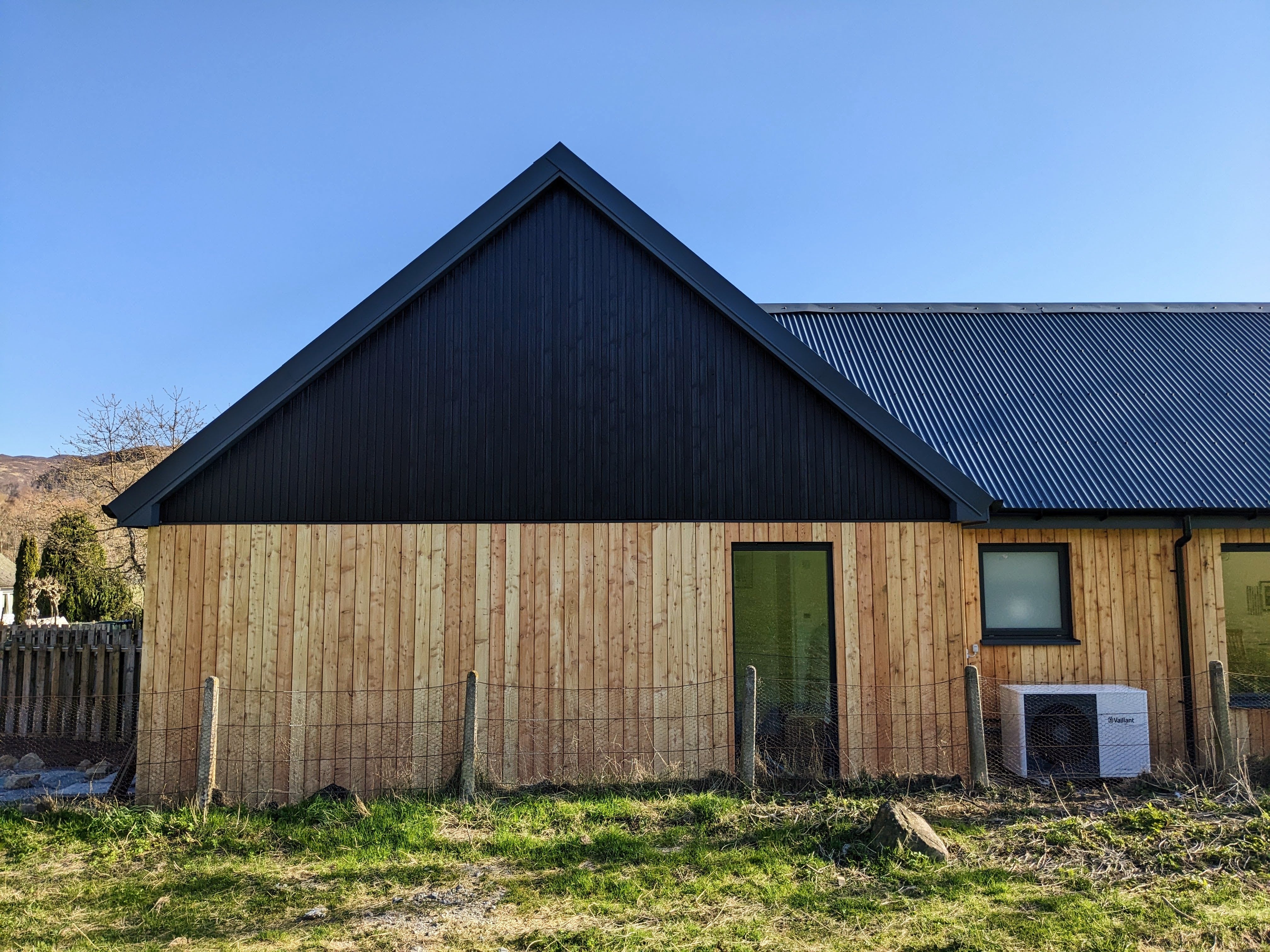When it comes to roofing, the apex roof stands out for its practicality and distinct aesthetic appeal.
Whether you're considering a new roof or simply curious about architectural styles, understanding the apex roof's structure, function, and benefits is essential. In this blog, we will explore the ins and outs of apex roofs, from their construction to their advantages and drawbacks. By the end, you'll have a solid grasp of what makes this roof type unique and whether it might be the right choice for your next project.
What Is an Apex on a Roof?
The apex of a roof is the highest point where two sloping sides meet, forming a peak often associated with traditional gabled houses.
This peak, also known as the ridge or the peak, plays a critical role in the overall structure and functionality of the roof.
Key Elements of the Apex
- Definition: The apex is where two sloping sides of the roof converge. This meeting point creates a peak that runs along the length of the roof, commonly referred to as the ridge.
- Location: Typically, the apex is located at the center of the roof, but it can also be positioned off-center depending on the design.
- Visual Identification: The apex is most visible in roofs with a steep pitch, where the triangular shape of the roof is prominent.
The apex is not just a single point but rather a line formed by the intersection of the roof's two sloping sides. This line, or ridge, is crucial in distributing the roof's weight and ensuring the structure's stability.
🔆 Key Takeaway: The apex is the highest point of a roof where two sloping sides meet, forming a ridge that is central to the roof's structural integrity and aesthetic appeal.
The Function of an Apex on a Roof
The apex of a roof is more than just a design element; it serves several critical functions that contribute to the roof's overall performance.
From providing structural support to aiding in water and snow shedding, the apex plays a pivotal role in ensuring your roof is both functional and durable.
How the Apex Supports the Roof
- Structural Support: The apex helps distribute the weight of the roof evenly across the structure, which is especially important in areas prone to heavy snowfall. By doing so, it reduces the risk of roof collapse under heavy loads.
- Weight Distribution: The sloping sides of the roof, meeting at the apex, ensure that the load is evenly spread out, reducing pressure points that could cause structural damage.
Apex and Weather Resistance
-
Water Shedding: One of the primary functions of the apex is to direct water away from the roof. The sloping design ensures that rainwater flows towards the gutters and away from the building, minimizing the risk of leaks and water damage.
-
Snow Management: In regions with significant snowfall, the apex helps shed snow efficiently, preventing build-up that could lead to structural issues. The angle of the slope plays a crucial role in how effectively the roof manages snow.
The apex isn't just about the peak itself; it also involves understanding the line of the ridge and how it contributes to the roof's ability to handle various weather conditions. Properly constructed, the apex can greatly extend the lifespan of a roof by mitigating potential damage from water and snow.
🔆 Key Takeaway: The apex is vital for distributing the roof's weight evenly and efficiently managing water and snow, making it an essential component of any well-designed roof.
Understanding Roof Pitch
The pitch of a roof refers to the angle formed by the sloping sides of the roof as they meet at the apex. The pitch is a critical factor in determining how well a roof performs in various weather conditions, as well as its overall aesthetic. A well-chosen pitch can enhance both the functionality and appearance of your roof.
The Importance of Roof Pitch
- Definition of Pitch: Roof pitch is measured as the angle at which the roof slopes. This angle can vary widely, from steep pitches that form sharp angles to shallow pitches with gentler slopes.
-
Steep vs. Shallow Pitches:
- Steep Pitches: These are often found in areas with heavy rainfall or snowfall, as the sharp angle helps in quickly shedding water and snow.
- Shallow Pitches: These are more common in regions with less precipitation, where the risk of snow buildup is lower. Shallow pitches can also create more usable space inside the building, such as in an attic.
How Pitch Affects Roof Performance
- Water Drainage: A steeper pitch facilitates better water drainage, reducing the chances of leaks or water damage. This is particularly important in regions with heavy rainfall.
- Snow Shedding: Steeper pitches are better at shedding snow, which helps to prevent the weight of accumulated snow from causing structural damage.
- Aesthetic Considerations: The pitch also contributes to the overall look of the building. A steep pitch can give a home a more traditional, dramatic appearance, while a shallow pitch offers a modern, sleek look.
Choosing the right pitch for your roof involves balancing aesthetic preferences with functional needs. For instance, if you're living in an area prone to heavy snow, a steeper pitch might be necessary to avoid structural issues.
🔆 Key Takeaway: The pitch of your roof is crucial in determining how well it performs under various weather conditions, with steep pitches being ideal for shedding water and snow, while shallow pitches may offer more interior space.
Building an Apex on a Roof
Constructing an apex roof involves a series of steps that ensure the roof is both sturdy and capable of performing its intended functions. From laying the foundation with rafters to applying the final roofing material, each stage of the construction process is critical to the roof's overall success.
Step-by-Step Construction Process
- Rafters Installation: The first step in building an apex roof is installing the rafters. These are the diagonal beams that support the roof's weight and form the skeleton of the roof. The rafters must be evenly spaced and securely fastened to ensure stability.
- Sheathing Application: Once the rafters are in place, they are covered with sheathing material, typically plywood or OSB (oriented strand board). This sheathing provides additional support and forms the base onto which the roofing material will be applied.
- Adding Roofing Material: After the sheathing is installed, the next step is to apply the roofing material. This could be anything from shingles to corrugated roofing, depending on the desired look and the roof's functional requirements.
Materials Used in Apex Roof Construction
- Rafters: Usually made from wood or steel, rafters are the primary support structure.
- Sheathing: Commonly plywood or OSB, this layer provides a base for the roofing material.
- Roofing Material: Options include asphalt shingles, corrugated plastic roofing, metal panels, or tile effect roofing sheets, depending on the desired durability and aesthetic.
Building an apex roof requires careful planning and precision. Each element, from the rafters to the final roofing material, plays a role in ensuring the roof is both functional and aesthetically pleasing.
Types of Apex Roofs: Symmetrical vs. Asymmetrical
Apex roofs can be categorized into two main types: symmetrical and asymmetrical. Each type has its own unique characteristics, benefits, and potential drawbacks. Understanding these differences can help you choose the best design for your needs.
Symmetrical Apex Roofs
- Definition: A symmetrical apex roof has two sides that are identical in shape and size. The peak of the roof is centered, creating a balanced and uniform appearance.
-
Advantages:
- Aesthetic Appeal: The symmetry of this roof type is often seen as more visually pleasing.
- Structural Balance: The even distribution of weight on both sides of the roof can make it more stable and easier to construct.
Asymmetrical Apex Roofs
- Definition: An asymmetrical apex roof has two sides that differ in shape, size, or slope. The peak may be off-center, giving the roof a more unique and dynamic look.
-
Advantages:
- Design Flexibility: Asymmetrical roofs can be tailored to meet specific design needs, such as maximizing natural light or creating additional interior space.
- Unique Appearance: The distinctive look of an asymmetrical roof can add character to a building, making it stand out.
Comparing the Two Types
- Cost Considerations: Symmetrical roofs are generally easier and less expensive to build due to their uniformity. Asymmetrical roofs may require more complex design and construction, potentially increasing costs.
- Functionality: Both types of roofs offer excellent water and snow shedding capabilities, but the specific performance can vary based on the roof's pitch and design.
Choosing between a symmetrical and asymmetrical apex roof depends on your specific needs, budget, and aesthetic preferences. Both types offer unique benefits, so it's important to consider what will work best for your home or building.
Pros and Cons of an Apex Roof
Apex roofs come with a variety of advantages, but like any architectural feature, they also have their downsides. Weighing the pros and cons can help you determine whether an apex roof is the right choice for your building project.
Advantages of an Apex Roof
- Effective Water and Snow Shedding: The steep slope of an apex roof ensures efficient water runoff, reducing the risk of leaks and water damage. This makes it ideal for areas with heavy rainfall or snowfall.
- Additional Headroom: Apex roofs can create extra headroom in attics or upper floors, providing additional usable space without expanding the building's footprint.
- Aesthetic Appeal: The classic triangular shape of an apex roof is aesthetically pleasing and works well with various architectural styles.
Disadvantages of an Apex Roof
- Higher Cost: Due to the additional materials and labor required to build an apex roof, it can be more expensive than other roof types. The complexity of construction may also contribute to higher costs.
- Construction Challenges: Apex roofs are more complex to build, requiring skilled labor and careful planning. This can lead to longer construction times and increased labor costs.
- Potential Insulation Issues: Apex roofs may not provide as much insulation as other roof types, which could result in higher heating and cooling costs. This is especially true in climates with extreme temperatures.
While apex roofs offer several benefits, they also come with potential drawbacks. It's important to consider these factors when deciding whether an apex roof is the best choice for your building.
🔆 Key Takeaway: Apex roofs are highly effective at shedding water and snow and provide additional headroom, but they can be more expensive and challenging to build, with potential insulation concerns in extreme climates.
Conclusion
In conclusion, apex roofs are a popular choice for both their functionality and aesthetic appeal. Whether you opt for a symmetrical or asymmetrical design, the apex roof offers reliable structural support, effective weather resistance, and the potential for additional interior space.
However, it's important to weigh the costs and potential challenges associated with construction and insulation.
By understanding the key aspects of apex roofs, you can make an informed decision that best suits your needs and preferences.
For more information on roofing materials and styles, check out our guides on corrugated roofing and summer house roofing.

